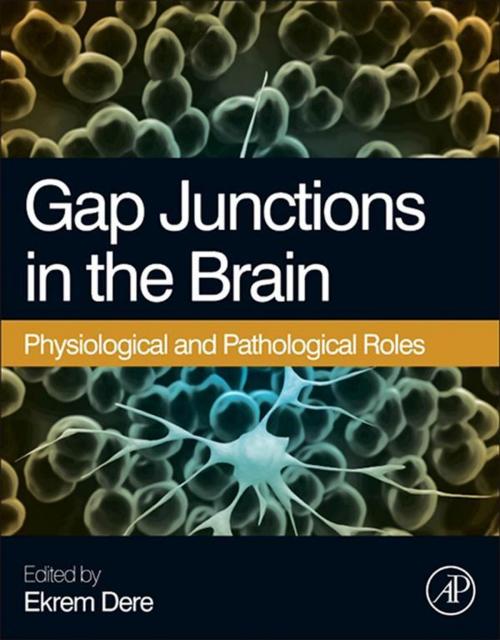Gap Junctions in the Brain
Physiological and Pathological Roles
Nonfiction, Health & Well Being, Medical, Specialties, Internal Medicine, Neuroscience, Science & Nature, Science, Biological Sciences| Author: | ISBN: | 9780124159273 | |
| Publisher: | Elsevier Science | Publication: | December 12, 2012 |
| Imprint: | Academic Press | Language: | English |
| Author: | |
| ISBN: | 9780124159273 |
| Publisher: | Elsevier Science |
| Publication: | December 12, 2012 |
| Imprint: | Academic Press |
| Language: | English |
Gap junctions between glial cells or neurons are ubiquitously expressed in the mammalian brain and play a role in brain development including cell differentiation, cell migration and survival, and tissue homeostasis, as well as in human diseases including hearing loss, neuropathies, epilepsy, brain trauma, and cardiovascular disease. This volume provides neuroscience researchers and students with a single source for information covering the physiological, behavioral and pathophysiological roles of gap junctions in the brain. In addition, the book also discusses human disease conditions associated with mutations in single gap junction connexion genes, making it applicable to clinicians doing translational research. Finally, it includes reviews of pharmacological studies with gap junction blockers and openers, summarizing information obtained from phenotyping gap junctions mouse mutants.
- Serves as the most current and comprehensive reference available covering the physiological, behavioral and pathophysiological roles of gap junctions in the brain
- Chapters summarize knowledge of the basic physiology of gap junctions in the brain, as well as of human disease conditions associated with mutations in single gap junction connexin genes
- Includes reviews of pharmacological studies with gap junction blockers and openers, summarizing information obtained from phenotyping gap junctions mouse mutants
Gap junctions between glial cells or neurons are ubiquitously expressed in the mammalian brain and play a role in brain development including cell differentiation, cell migration and survival, and tissue homeostasis, as well as in human diseases including hearing loss, neuropathies, epilepsy, brain trauma, and cardiovascular disease. This volume provides neuroscience researchers and students with a single source for information covering the physiological, behavioral and pathophysiological roles of gap junctions in the brain. In addition, the book also discusses human disease conditions associated with mutations in single gap junction connexion genes, making it applicable to clinicians doing translational research. Finally, it includes reviews of pharmacological studies with gap junction blockers and openers, summarizing information obtained from phenotyping gap junctions mouse mutants.
- Serves as the most current and comprehensive reference available covering the physiological, behavioral and pathophysiological roles of gap junctions in the brain
- Chapters summarize knowledge of the basic physiology of gap junctions in the brain, as well as of human disease conditions associated with mutations in single gap junction connexin genes
- Includes reviews of pharmacological studies with gap junction blockers and openers, summarizing information obtained from phenotyping gap junctions mouse mutants















